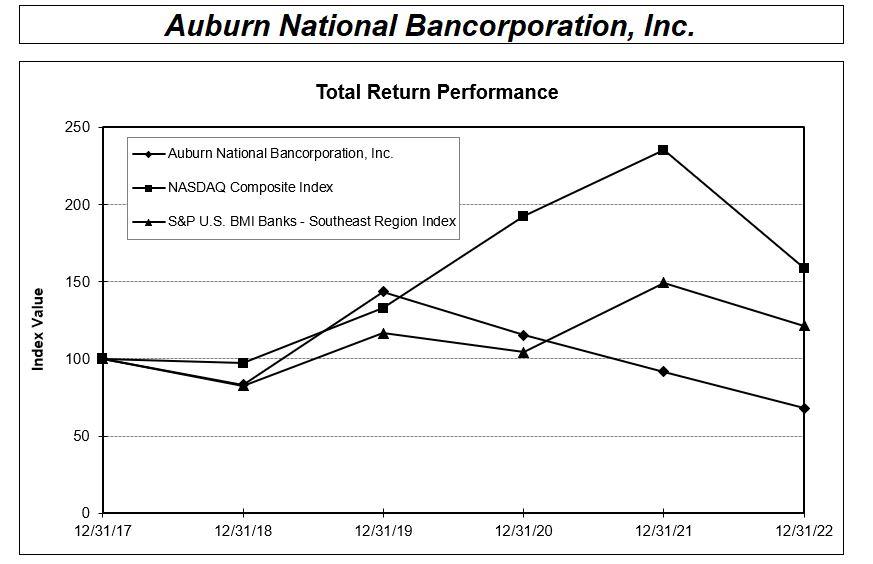8
The BHC Act requires prior Federal Reserve approval for,
among other things, the acquisition by a bank holding company
of direct or indirect ownership or control of more than 5% of the voting shares or substantially
all the assets of any bank, or
for a merger or consolidation of a bank holding company with another
bank holding company.
The BHC Act generally
prohibits a bank holding company from acquiring direct or indirect ownership or
control of voting shares of any company
that is not a bank or bank holding company and from engaging directly or indirectly in any
activity other than banking or
managing or controlling banks or performing services for its authorized subsidiar
ies.
A bank holding company may,
however, engage in or acquire an interest in a company that
engages in activities that the Federal Reserve has determined
by regulation or order to be so closely related to banking or managing or controlling banks
as to be a proper incident
thereto. On January 30, 2020, the Federal Reserve adopted new rules, effective
September 30, 2020 simplifying
determinations of control of banking organizations for BHC Act purposes.
Bank holding companies that are and remain “well-capitalized” and “well-managed,”
as defined in Federal Reserve
Regulation Y,
and whose insured depository institution subsidiaries maintain “satisfactory”
or better ratings under the
Community Reinvestment Act of 1977 (the “CRA”), may elect to become
“financial holding companies.” Financial holding
companies and their subsidiaries are permitted to acquire or engage in activities
such as insurance underwriting, securities
underwriting, travel agency activities, broad insurance agency activities,
merchant banking and other activities that the
Federal Reserve determines to be financial in nature or complementary thereto.
In addition, under the BHC Act’s
merchant
banking authority and Federal Reserve regulations, financial holding companies
are authorized to invest in companies that
engage in activities that are not financial in nature, as long as the financial holding
company makes its investment, subject
to limitations, including a limited investment term, no day-to-day management,
and no cross-marketing with any depositary
institutions controlled by the financial holding company.
The Federal Reserve recommended repeal of the merchant
banking powers in its September 16, 2016 study pursuant to Section 620 of the Dodd-Frank Wall
Street Reform and
Consumer Protection Act of 2010 (the “Dodd-Frank Act”), but has taken no action.
The Company has not elected to
become a financial holding company,
but it may elect to do so in the future.
Financial holding companies continue to be subject to Federal Reserve supervision, regulation
and examination, but the
Gramm-Leach-Bliley Act of 1999 the “GLB Act”) applies the concept of functional
regulation to subsidiary activities.
For
example, insurance activities would be subject to supervision and regulation by state insurance
authorities.
The BHC Act permits acquisitions of banks by bank holding companies, subject
to various restrictions, including that the
acquirer is “well capitalized” and “well managed”.
Bank mergers are also subject to the approval of the acquiring bank’s
primary federal regulator and the Bank Merger Act.
The BHC Act and the Bank Merger Act provide various generally
similar statutory factors.
Under the Alabama Banking Code, with the prior approval of the Alabama
Superintendent, an
Alabama bank may acquire and operate one or more banks in other states pursuant to
a transaction in which the Alabama
bank is the surviving bank.
In addition, one or more Alabama banks may enter into a merger
transaction with one or more
out-of-state banks, and an out-of-state bank resulting from such transaction
may continue to operate the acquired branches
in Alabama.
The Dodd-Frank Act permits banks, including Alabama banks, to branch anywhere
in the United States.
Bank mergers are also subject to the approval of the acquiring bank’s
primary federal regulator.
On March 19, 2022, the
FDIC published a “Request for Information and Comment on Rules, Regulations,
Guidance, and Statements of Policy
Regarding Bank Merger Transactions” (the
“FDIC Notice”).
The FDIC solicited comments from interested parties
regarding the application of the laws, practices, rules, regulations, guidance, and statements
of policy (together, regulatory
framework) that apply to merger transactions involving one
or more insured depository institution, including the merger
between an insured depository institution and a noninsured institution. The FDIC is interested
in receiving comments
regarding the effectiveness of the existing framework in
meeting the requirements of the Bank Merger Act.
The Request described the consolidation of the banking industry,
the increase in the number of large and systemically
important banking organizations and the need to evaluate large
mergers’ financial stability and resolution of failing bank
risks consistent with the Dodd-Frank Act changes to the BHC Act and the Bank Merger
Act, and the effects of banking
mergers on competition.
The FDIC Notice also stated that Executive Order Promoting Competition in the
American
Economy (July 9, 2021) (the “Executive Order”), among other things, “instructs U.S.
agencies to consider the impact that
consolidation may have on maintaining a fair, open,
and competitive marketplace, and on the welfare of workers, farmers,
small businesses, startups, and consumers.”
The FDIC requested comment on all aspects of the bank regulatory
framework, including qualitative and quantitative support for such responses.
The other Federal bank regulators as well as
the U.S. Department of Justice are also considering the framework for
mergers involving banking organizations, including
the competitive effects of such combinations.
The federal bank regulators have not announced any conclusions, but these
reviews could result in changes to the frameworks used to evaluate banking combinations
which could make such
combinations more difficult, time consuming and expensive.

